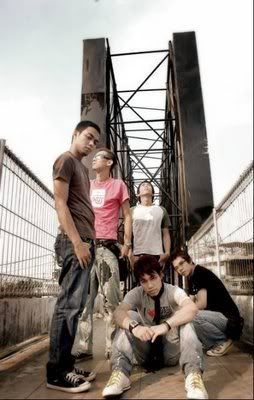Knowing how to drive a car before tackling the art of operating a manual transmission is a highly recommended, but not required, idea. Having to worry about shifting and what your left foot is doing is distracting enough, being uncomfortable behind the wheel no matter what transmission the car has makes it even worse. The area where you first practice should be flat, free of obstructions and obviously have no vehicular or pedestrian traffic. Sitting in the Car Starting the Car Push the clutch to the floor again, and start the car. Even though the engine will run in neutral, modern cars have a lockout disabling the ability to start the car unless the clutch is fully depressed. Once the car is started, let the clutch up slowly, just to make sure the car really isn't in gear. Being on a flat surface, you can go ahead and release the parking brake at this point; there's no need to have your right foot on the brake like you normally would on the road. Now the fun begins, and opinions diverge! Get Moving! Congratulations! You just did the toughest part of driving a manual, starting from a standing stop! Practice this a few times until you can smoothly get the car moving without the car lugging and without touching the gas pedal. Going Faster... Parking Brake Downshifting Stopping Starting on a Hill Advanced Techniques: Double-Clutching Heel-and-toe |
About Me
- About Us
- Variety of cut price item. We also accept large number of order with lower and negotiable price if you need. Interested? or Any enquiries, Please Call me at +6012-3464123 or Email me at cutpriceitem@gmail.com
Mendermalah Dengan Klik Iklan Ini =]
Sunday, August 24, 2008
Learn to Drive a Car with a Manual Transmission
Beauty!
"Beauty depends on size as well as symmetry.
No very small animal can be beautiful,
for looking at it takes so small a portion of time that the impression of it will be confused.
Nor can any very large one,
for a whole view of it cannot be had at once,
and so there will be no unity and completeness."
Aristotle
No very small animal can be beautiful,
for looking at it takes so small a portion of time that the impression of it will be confused.
Nor can any very large one,
for a whole view of it cannot be had at once,
and so there will be no unity and completeness."
Aristotle
Tuesday, August 19, 2008
Men and Women’s Views@Thinks in Malaysia

95% of Women count the ability to match coloura a major plus point for men.
52% of Malaysian women think men need to work on matching their ties.
76% of Malaysian men said black was the safest colour, follow by white (ay anout their dressing.19%) and Beige was third place (3%)
5% of men would not spend any more than RM50 on article of clothing, including shoes.
66% of men who shop for clothes prefer to bring a female friend along for fashion advice.
71% of Malaysian women say they would check out a men’s face before any other body part.
42% of Malaysian men say they don’t care what the women say about their dressing.
(source Men’s Health Magazine)
Wednesday, August 13, 2008
Sunday, July 27, 2008
How a Woman Flirts to Get Your Attention
It's all about body language, and women often use body language to show men they are interested. Women who flirt are subconsciously trying to tell
you they are interested and want to take things to the next level. Men sometimes find, though, that interpreting female flirting signals can be
challenging. They may term it more of a mystery, in fact. The problem is that women often send flirting signs than can give off mixed information.
For instance, sometimes women who flirt are genuinely attracted to you and want to get to know you. On the contrary, women sometimes are just flirting in
a friendly manner and, actually, have no feelings of attraction. So, the question is how to a guy can depict honest flirting from the friendly (not really
interested) flirting. Though women will remain a challenge to understand, there are ways to help you determine if a woman is sending you a true
flirting signal. By learning to identify these flirting signals, you will be in a much better position to figure out of she is attracted to you and interested in
getting to know you. Remember what I said about body language? Well, here is when it comes into play. Women who flirt will often begin flirting with
you before you even begin a conversation with her.
Here are three flirting cues that mean she is attracted to you and would like you to approach her:
Signal 1: She is constantly looking your way. When you out trying to meet women, you might notice one who constantly glances your way. When you
are in a social setting like a bar or the like, don't be fooled. Girls will randomly look your way yet are not really interested in you. But, if you find a
woman who keeps looking in you direction and checking you out, she is more likely than not flirting with you. Now, she is definitely interested if she
locks eyes with you! This is one of the more obvious flirting signals. Keep in mind that eye contact is usually the main way women flirt with guys
initially, which means women will typically not approach you to initiate conversation. That ball is in your court. So, if you find a girl glancing your way,
go ahead and approach her. She is probably hoping you will.
Signal 2: She is trying to get your attention. In addition to eye contact, women who flirt
because they are interested also make an extra effort to get you attention. She may walk or stand near you several times. If you find her standing by
you and her friends are nowhere to be seen, she may be isolating herself from them hoping you start talking to her. So, if you notice her actively
placing herself in a position that you may notice her, you have just picked up on one of the more classic female flirting signs.
Signal 3: She makes
eye contact and smiles. As mentioned briefly earlier, one of the more forward ways women flirt is by locking eyes and smiling. Women who flirt by
sending you a smile are telling you that, first, she likes she sees and, second, she wants you to come over. Typically, women do not casually smile at
guys they are not interested in. So, take a smile as a clear sign that she is interested and wants you to approach her. The three signs above are real
ways women flirt to get men to approach them. By paying attention and picking up on these cues, you can be more confident in the fact that she is
attracted to you and make your way over. But, it is up to you to notice the flirting signals!
you they are interested and want to take things to the next level. Men sometimes find, though, that interpreting female flirting signals can be

challenging. They may term it more of a mystery, in fact. The problem is that women often send flirting signs than can give off mixed information.
For instance, sometimes women who flirt are genuinely attracted to you and want to get to know you. On the contrary, women sometimes are just flirting in
a friendly manner and, actually, have no feelings of attraction. So, the question is how to a guy can depict honest flirting from the friendly (not really
interested) flirting. Though women will remain a challenge to understand, there are ways to help you determine if a woman is sending you a true
flirting signal. By learning to identify these flirting signals, you will be in a much better position to figure out of she is attracted to you and interested in
getting to know you. Remember what I said about body language? Well, here is when it comes into play. Women who flirt will often begin flirting with
you before you even begin a conversation with her.

Here are three flirting cues that mean she is attracted to you and would like you to approach her:
Signal 1: She is constantly looking your way. When you out trying to meet women, you might notice one who constantly glances your way. When you
are in a social setting like a bar or the like, don't be fooled. Girls will randomly look your way yet are not really interested in you. But, if you find a
woman who keeps looking in you direction and checking you out, she is more likely than not flirting with you. Now, she is definitely interested if she
locks eyes with you! This is one of the more obvious flirting signals. Keep in mind that eye contact is usually the main way women flirt with guys
initially, which means women will typically not approach you to initiate conversation. That ball is in your court. So, if you find a girl glancing your way,
go ahead and approach her. She is probably hoping you will.
Signal 2: She is trying to get your attention. In addition to eye contact, women who flirt
because they are interested also make an extra effort to get you attention. She may walk or stand near you several times. If you find her standing by
you and her friends are nowhere to be seen, she may be isolating herself from them hoping you start talking to her. So, if you notice her actively
placing herself in a position that you may notice her, you have just picked up on one of the more classic female flirting signs.
Signal 3: She makes
eye contact and smiles. As mentioned briefly earlier, one of the more forward ways women flirt is by locking eyes and smiling. Women who flirt by
sending you a smile are telling you that, first, she likes she sees and, second, she wants you to come over. Typically, women do not casually smile at
guys they are not interested in. So, take a smile as a clear sign that she is interested and wants you to approach her. The three signs above are real
ways women flirt to get men to approach them. By paying attention and picking up on these cues, you can be more confident in the fact that she is
attracted to you and make your way over. But, it is up to you to notice the flirting signals!
Sunday, May 4, 2008
Subscribe to:
Posts (Atom)








